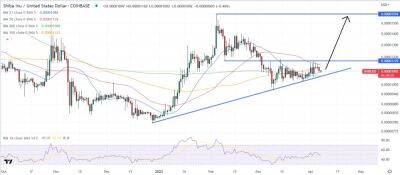Price analysis 4/3: SPX, DXY, BTC, ETH, BNB, XRP, ADA, MATIC, DOGE, SOL
Bitcoin’s (BTC) price initially dipped, but then recovered on April 3. The volatility happened after several OPEC+ members announced plans to cut oil production totaling 1.65 million barrels per day until the end of the year. Some analysts expect this move to tighten supply, resulting in higher prices at the pump. That may in turn boost inflation, warranting a continued hawkish stance from central banks.
Initially, the United States dollar index (DXY) rose but it could not sustain the intraday rally. This suggests that the market participants believe the event will not cause any major deviation in the Federal Reserve’s policy. A weaker DXY is generally considered a positive for risky assets.
Cryptocurrencies have remained strong in the face of adverse macroeconomic news and regulatory action against crypto firms in the past few days. When the price of an asset does not crack with negative news, it shows that traders are not panicking and selling their holdings.
Could Bitcoin overcome the obstacle at $30,000 and start a bull run? Will altcoins also join the party? Let’s study the charts to find out.
The S&P 500 index (SPX) picked up momentum after breaking out of the wedge pattern. Buyers will try to push the price to 4,200 which is likely to act as a strong barrier.
If the price turns down from 4,200 but rebounds off the 20-day exponential moving average (4,002), it will suggest that the sentiment has turned bullish. That could increase the possibility of a break above the 4,200 to 4,325 resistance zone.
On the contrary, the bears will try to protect the overhead resistance zone and pull the index back below the moving averages. If they do that, several aggressive bulls may get trapped. The index may then collapse to the
Read more on cointelegraph.com

![Bitcoin [BTC]: What the king coin’s FOMO and FUD indicators suggest](https://finance-news.co/storage/thumbs_400/img/2023/4/7/63358_egl.jpg)













